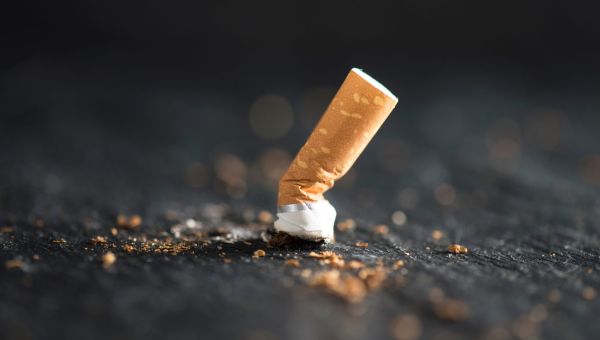7 lifestyle changes to help reduce diabetes risk
Lower your odds of developing the condition with these wise strategies.
Updated on August 1, 2024

Type 2 diabetes makes up 90 to 95 percent of diabetes cases. It affects more than 37 million people in the United States, according to the Centers for Disease Control and Prevention. Over time, the disease can harm your eyes, kidneys, and cardiovascular system and raise your risk for many other conditions. Every year in the U.S., more than 100,000 people die of diabetes, and experts believe it plays a significant role in thousands of additional deaths.
You can’t control some risk factors for diabetes, such as family history and age. But you can lower the chances of developing the condition by making healthy lifestyle choices. Try these strategies to reduce your risk and improve your health and overall quality of life.

Eat An Overall Healthy Diet
Your diet is linked to your risk of developing type 2 diabetes. Being mindful of the foods you choose to eat can go a long way to preventing the disease. To that end, here’s a handy guide to help create balanced, nutritious meals. At each meal:
- Load half of your plate with fruits and veggies. A small piece of fruit or a 1/2 cup of fruit salad is a great addition to non-starchy vegetables such as broccoli, mushrooms, and zucchini.
- Fill one-quarter of your plate with 3 ounces of lean protein such as chicken or salmon.
- To the remaining quarter, add 100 percent whole grains, like quinoa, brown rice, or barley.
Limit or avoid food high in saturated fat and added sugar, as well as fried or processed foods.

Move More
Inactivity is a risk factor for type 2 diabetes. Adults should get 150 minutes of moderate aerobic activity or 75 minutes of vigorous aerobic activity each week. They should also do muscle-strengthening activities of at least moderate intensity a minimum of two days per week.
Adding movement to your day doesn’t have to mean spending hours at the gym or setting out on a 5-mile run (unless that’s something you enjoy). You can do it throughout the day at work, at home, and even while you’re watching television. Not sure where to start? Try these ideas:
- Take the stairs instead of the elevator.
- Put on music and dance while you vacuum.
- Walk the dog for a few extra minutes.
- Hand-deliver a message to a neighbor or co-worker’s desk.

Maintain A Healthy Weight
Being overweight or obese is the primary risk factor for type 2 diabetes. If you’re carrying excess weight, dropping a few pounds could reduce your risk. In fact, the landmark Diabetes Prevention Program study found that participants who lost about 7 percent of their total weight decreased their risk of diabetes by almost 60 percent.
Combining a healthy diet with plenty of exercise is a tried-and-true prescription for shedding pounds. But there are many different ways to approach weight loss. To find out what might work best for you, talk to a healthcare provider (HCP) before embarking on a weight loss journey.

Kick Tobacco
Cigarette smoking harms nearly every organ in your body and increases the risk of lung cancer, heart disease, cataracts—and type 2 diabetes. In fact, people who smoke are about 30 to 40 percent more likely to develop diabetes than people who don’t smoke. Smoking leads to inflammation and an imbalance of helpful and harmful molecules in your body, called oxidative stress. Both are linked to elevated risk.
The solution? If you smoke, it’s time to quit. Speak with an HCP about a plan to stop smoking. Or, head to reputable resources like Smokefree.gov or the American Cancer Society for more information.

Sip Responsibly
While too much alcohol can add empty calories to your diet and increase your chances of developing type 2 diabetes, some research suggests that moderate drinking—red wine, especially—may be linked to a lower risk of diabetes, as well as heart disease. This isn’t definitive, however, and more studies are needed to examine the relationship. In fact, even in moderation, alcohol can have a wide range of negative health effects, such as increasing your odds of several cancers.
So, if you don’t drink, don’t start. If you do, do so in moderation. That’s a limit of one drink each day for women and two for men. It’s wise to speak with an HCP about what’s best for you.

Check Your Numbers
Regularly having your blood pressure, cholesterol, and blood sugar levels checked is important for everyone. But knowing these numbers and what they mean is especially important for people at risk of diabetes, since high blood pressure, high cholesterol or higher-than-normal blood sugar levels increase the odds of developing the condition.
So, what’s healthy? Numbers vary from person to person, and your HCP will tell you if there is cause for concern. Generally, you might be at risk of type 2 diabetes if any of the following apply:
- Your blood pressure is 130/80 mm Hg or higher
- Your HDL cholesterol is lower than 40 mg/dL for men and 50 mg/dL for women
- Your triglyceride level is higher than 150 mg/dL
- Your fasting blood sugar levels exceed 100 mg/dL

Get Educated
Type 2 diabetes is a serious condition that can harm your body and even lead to an early death. Learning your risks is the first step to preventing the disease. Reach out to your HCP to find out more and remember to attend regular well visits to monitor your health. Together, you can make the best decisions for your well-being.

Centers for Disease Control and Prevention. About Type 2 Diabetes. Reviewed May 15, 2024.
Centers for Disease Control and Prevention. National Diabetes Statistics Report 2021. May 15, 2024.
Kochanek KD, Murphy SL, Xu JQ, Arias E. Mortality in the United States, 2022. NCHS Data Brief, no 492. Hyattsville, MD: National Center for Health Statistics. 2024.
Centers for Disease Control and Prevention. National Center for Health Statistics. Diabetes. Reviewed April 27, 2024.
National Vital Statistics Report. Deaths: Final Data for 2020. September 22, 2023.
National Institute of Diabetes and Digestive and Kidney Diseases. Preventing Type 2 Diabetes. November 2016.
U.S. Department of Health and Human Services. Physical Activity Guidelines for Americans: 2nd Edition. 2018.
Centers for Disease Control and Prevention. National Diabetes Prevention Program. What Is the National DPP? May 15, 2024.
U.S. Food and Drug Administration. How Smoking Can Increase Risk for and Affect Diabetes. May 15, 2024.
Cleveland Clinic. Oxidative Stress. Reviewed February 29, 2024.
American Heart Association. Study finds drinking wine with meals was associated with lower risk of type 2 diabetes. March 3, 2022.
Centers for Disease Control and Prevention. Alcohol and Cancer. Reviewed June 17, 2024.
National Institute of Diabetes and Digestive and Kidney Diseases. Risk Factors for Type 2 Diabetes. July 2022.
Cleveland Clinic. Cholesterol Numbers: What Do They Mean. Last reviewed July 31, 2020.
Centers for Disease Control and Prevention. Testing for Cholesterol. May 15, 2024.
American Diabetes Association. Diabetes and High Blood Pressure. Accessed August 1, 2024.
Oh RC, Trivette ET, Westerfield KL. Management of Hypertriglyceridemia: Common Questions and Answers. Am Fam Physician. 2020;102(6):347-354.
Centers for Disease Control and Prevention. Diabetes and Smoking. May 15, 2024.
MedlinePlus. Smoking. Accessed August 11, 2020.
Mayo Clinic. Type 2 Diabetes. January 9, 2019.
Mayo Clinic. Diabetes prevention: 5 tips for taking control. March 15, 2019.
Mayo Clinic. Weight loss: Diet and exercise. October 10, 2019.
Mayo Clinic. Diabetes. August 8, 2018.
American Diabetes Association. Life doesn’t end with type 2 diabetes. Accessed August 11, 2020.
American Diabetes Association. Tips and Meal Planning. Accessed August 11, 2020.
American Diabetes Association. Protein. Accessed August 11, 2020.
American Diabetes Association. Eat good to feel good. Accessed August 11, 2020.
American Diabetes Association. Learn the Genetics of Diabetes. Accessed August 11, 2020.
National Institute of Diabetes and Digestive and Kidney Diseases. Choose More than 50 Ways to Prevent Type 2 Diabetes. September 2014.
Harvard T.H. Chan School of Public Health. Simple Steps to Preventing Diabetes. Accessed August 11, 2020.
J Huang, X Wang, Y Zhang. Specific types of alcoholic beverage consumption and risk of type 2 diabetes: A systematic review and meta‐analysis. Journal of Diabetes Investigation. Published online May 10, 2016.
American Heart Association. Understand Your Risk for Diabetes. August 30, 2015.
More On


video

article

slideshow


video


video
